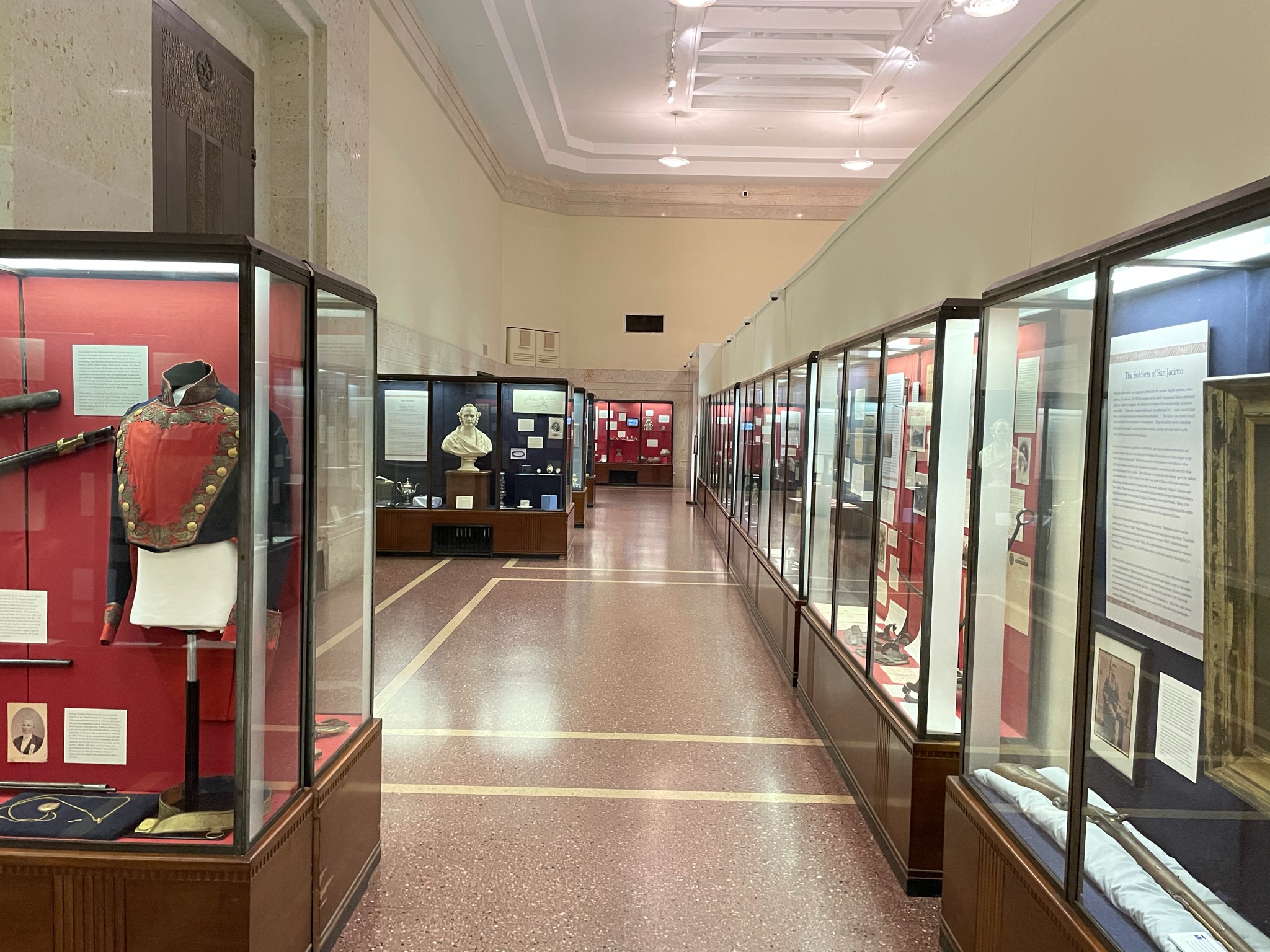Staff
At 567.31-foot-high the San Jacinto Monument is the world's tallest masonry column and is located on the Houston Ship Channel in unincorporated Harris County, Texas, near the city of Houston. The monument is topped with a 220-ton star that commemorates the site of the Battle of San Jacinto, the decisive battle of the Texas Revolution.
Built between 936 and 1939 and dedicated on April 21, 1939, the column and museum are part of the San Jacinto Battleground State Historic Site. When open visitors can take an elevator to the monument's observation deck for a view of Houston and the Battleship Texas which is docked nearby. It is the perfect day trip, so pack a picnic, and head to the spot where Texas was born.
An inscription on the monument tells the story of the birth of Texas:
In June, 1832, the colonists forced the Mexican authorities at Anahuac to release Wm. B. Travis and others from unjust imprisonment. The Battle of Velasco, June 26, and the Battle of Nacogdoches, August 2, followed; in both the Texans were victorious. Stephen Fuller Austin, "Father of Texas", was arrested January 3, 1834, and held in Mexico without trial until July, 1835. The Texans formed an army, and on November 12, 1835, established a provisional government.
The first shot of the Revolution of 1835-36 was fired by the Texans at Gonzales, October 2, 1835, in resistance to a demand by Mexican soldiers for a small cannon held by the colonists. The Mexican garrison at Goliad fell October 9; the Battle of Concepcion was won by the Texans, October 28. San Antonio was captured December 10, 1835 after five days of fighting in which the indomitable Benjamin R. Milam died a hero, and the Mexican Army evacuated Texas.
Texas declared her independence at Washington-on-the-Brazos March 2. For nearly two months her armies met disaster and defeat: Dr. James Grant's men were killed on the Aguadulce March 2; William Barret Travis and his men sacrificed their lives at the Alamo, March 6; William Ward was defeated at Refugio, March 14; Amos B. King's men were executed near Refugio, March 16; and James Walker Fannin and his army were put to death near Goliad March 27, 1836.
On this field on April 21, 1836 the Army of Texas commanded by General Sam Houston, and accompanied by the Secretary of War, Thomas J. Rusk, attacked the larger invading army of Mexicans under General Santa Anna. The battle line from left to right was formed by Sidney Sherman's regiment, Edward Burleson's regiment, the artillery commanded by George W. Hockley, Henry Millard's infantry and the cavalry under Mirabeau B. Lamar. Sam Houston led the infantry charge.
With the battle cry, "Remember the Alamo! Remember Goliad!" the Texans charged. The enemy, taken by surprise, rallied for a few minutes then fled in disorder. The Texans had asked no quarter and gave none. The slaughter was appalling, victory complete, and Texas free! On the following day General Antonio Lopez De Santa Anna, self-styled "Napoleon of the West", received from a generous foe the mercy he had denied Travis at the Alamo and Fannin at Goliad.
Citizens of Texas and immigrant soldiers in the Army of Texas at San Jacinto were natives of Alabama, Arkansas, Connecticut, Georgia, Illinois, Indiana, Kentucky, Louisiana, Maine, Maryland, Massachusetts, Michigan, Mississippi, Missouri, New Hampshire, New York, North Carolina, Ohio, Pennsylvania, Rhode Island, South Carolina, Tennessee, Texas, Vermont, Virginia, Austria, Canada, England, France, Germany, Ireland, Italy, Mexico, Poland, Portugal and Scotland.
Measured by its results, San Jacinto was one of the decisive battles of the world. The freedom of Texas from Mexico won here led to annexation and to the Mexican–American War, resulting in the acquisition by the United States of the states of Texas, New Mexico, Arizona, Nevada, California, Utah and parts of Colorado, Wyoming, Kansas and Oklahoma. Almost one-third of the present area of the American Nation, nearly a million square miles of territory, changed sovereignty."
At the base of the monument are a museum and theater, the cost is $12 per person with discounts for children, students, retirees, and veterans. The museum showcases the history of the battle of San Jacinto and is currently featuring an exhibit showcasing the story behind the construction of the monument.
Getting There:
From the North
Take I45 south or 59 south to Beltway 8, Sam Houston Tollway, or continue south to Highway 610. Take Beltway 8 (EZTag only) or Loop 610 east, and then south, crossing the Houston Ship Channel. Exit Highway 225 east, Texas Independence Highway, to La Porte. Exit Independence Parkway and turn left. When the road divides into two roads, remain in the left lane, continue through the tall stone park gates, and turn right into the park.
From the South
Take I45 north to Beltway 8, Sam Houston Tollway. Take Beltway 8 east, and then north. Exit Highway 225 east, Texas Independence Highway, to La Porte. Exit Independence Parkway and turn left. When the road divides into two roads, remain in the left lane, continue through the tall stone park gates, and turn right into the park.
From the East
Take I10 west to Independence Parkway North. Take the Lynchburg Ferry, follow Independence Parkway past the Battleship TEXAS, and turn left into the park toward the San Jacinto Monument. Note that Lynchburg Ferry hours may change. Alternatively, to avoid the ferry, continue west to Beltway 8 or Highway 610, and follow the directions From the North.
From the West
Take Highway 225 east, Texas Independence Highway, to La Porte. Exit Independence Parkway and turn left. When the road divides into two roads, remain in the left lane, continue through the tall stone park gates, and turn right into the park.






0 Comments
Post a Comment